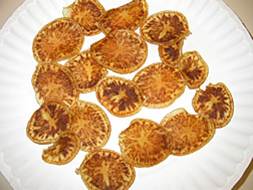5.4 billion pounds of potatoes are used to make potato chips in the U.S. every year. 50% of the potatoes grown in the U.S. come from the Pacific Northwest states of Washington, Oregon, and Idaho. The first appearance of a new potato disease known as “zebra chip” in the Pacific Northwest in 2011 caused great concern. The bacterium that causes zebra chip is transmitted to potato by an insect, the potato psyllid which transmits the bacterium within hours of colonizing a potato plant. Thus, psyllid controls must begin immediately upon detection of the insect in a field. The disease is not harmful to humans when they eat a potato chip, but the bacterium discolors the chips making them unmarketable. In regions where zebra chip has been a problem (Texas, New Zealand, Mexico, Honduras) entire fields have been abandoned.
“Potato producers and researchers, alike, were caught by surprise in late summer 2011 when zebra chip showed up for the first time in Washington, Oregon and Idaho, affecting most of the major cultivars grown in the region. Zebra chip, a disease spread by potato psyllids infected with the liberibacter bacterium, causes dark streaks in the tuber flesh. The discoloration is intensified when the infected tubers are processed into chips or fries. …At this point, the only way you’re going to control zebra chip is to manage your potato psyllids. …Nowhere where this thing has shown up, has it gotten better except by huge applications of insecticides.”
Authors: D. Keller
Affiliation: Field Editor, Potato Country.
Title: Zebra Chip Strikes Pacific Northwest.
Publication: Potato Country. January 2012. 28-31.


Touche. Solid arguments. Keep up the amazing effort.